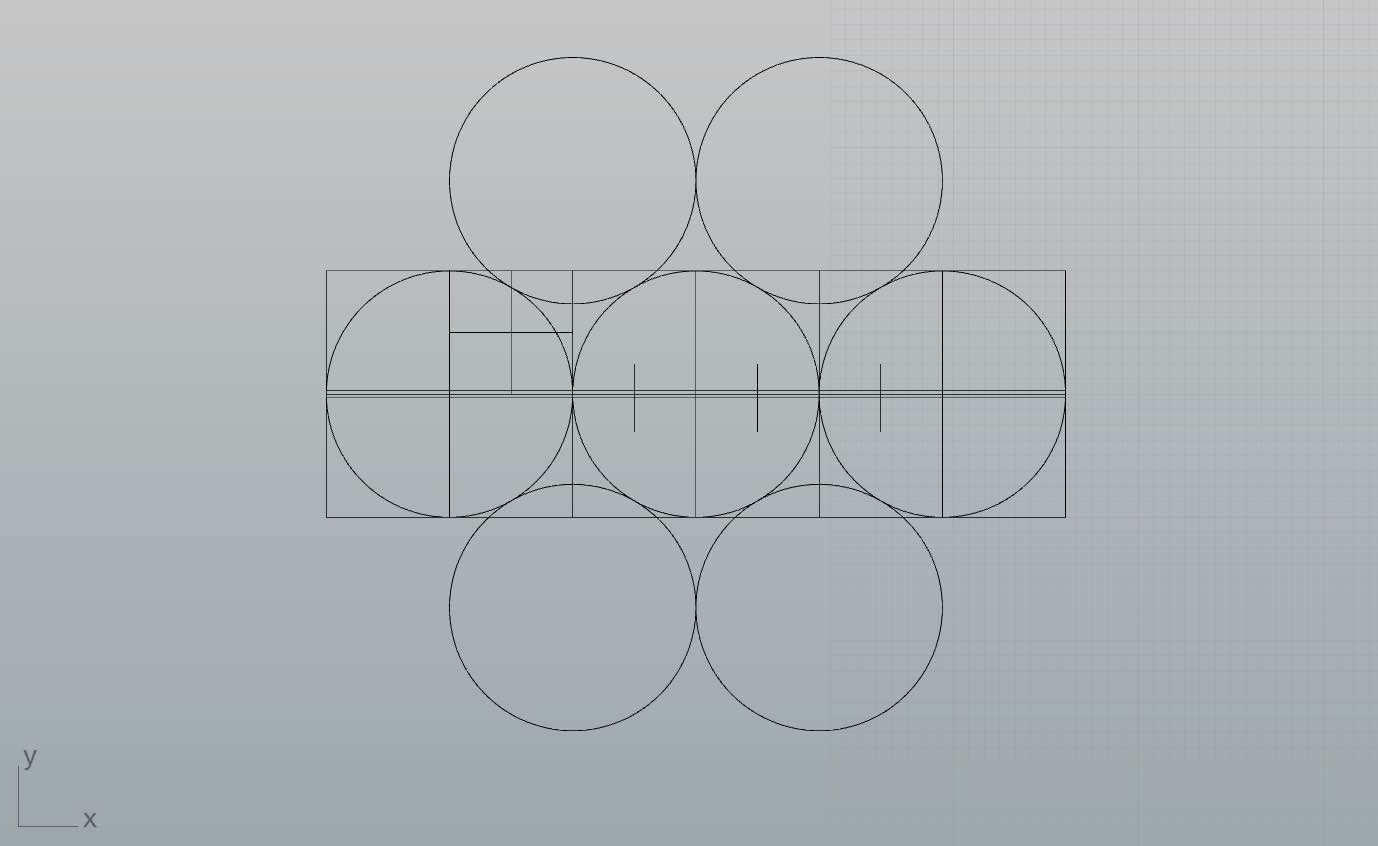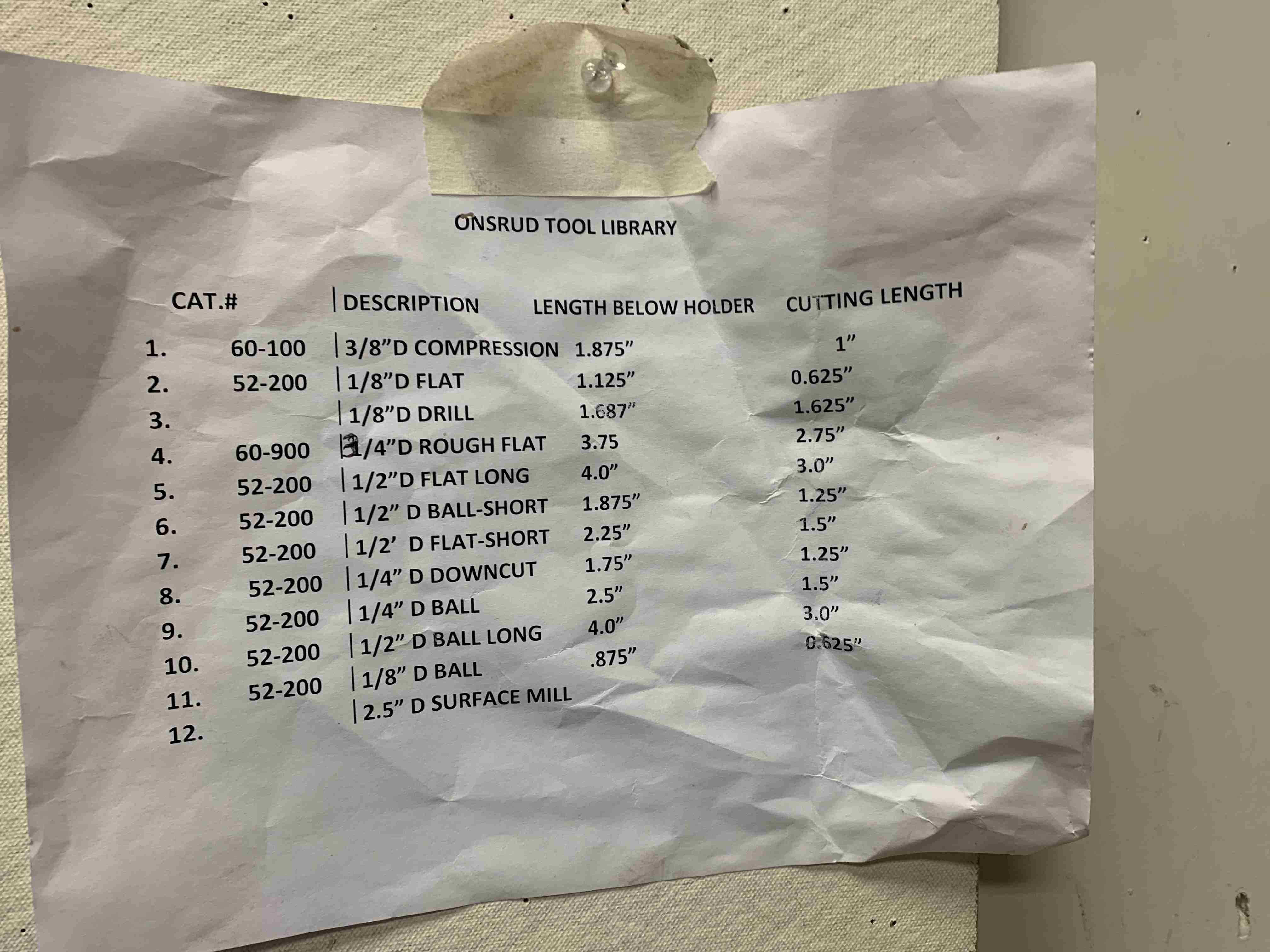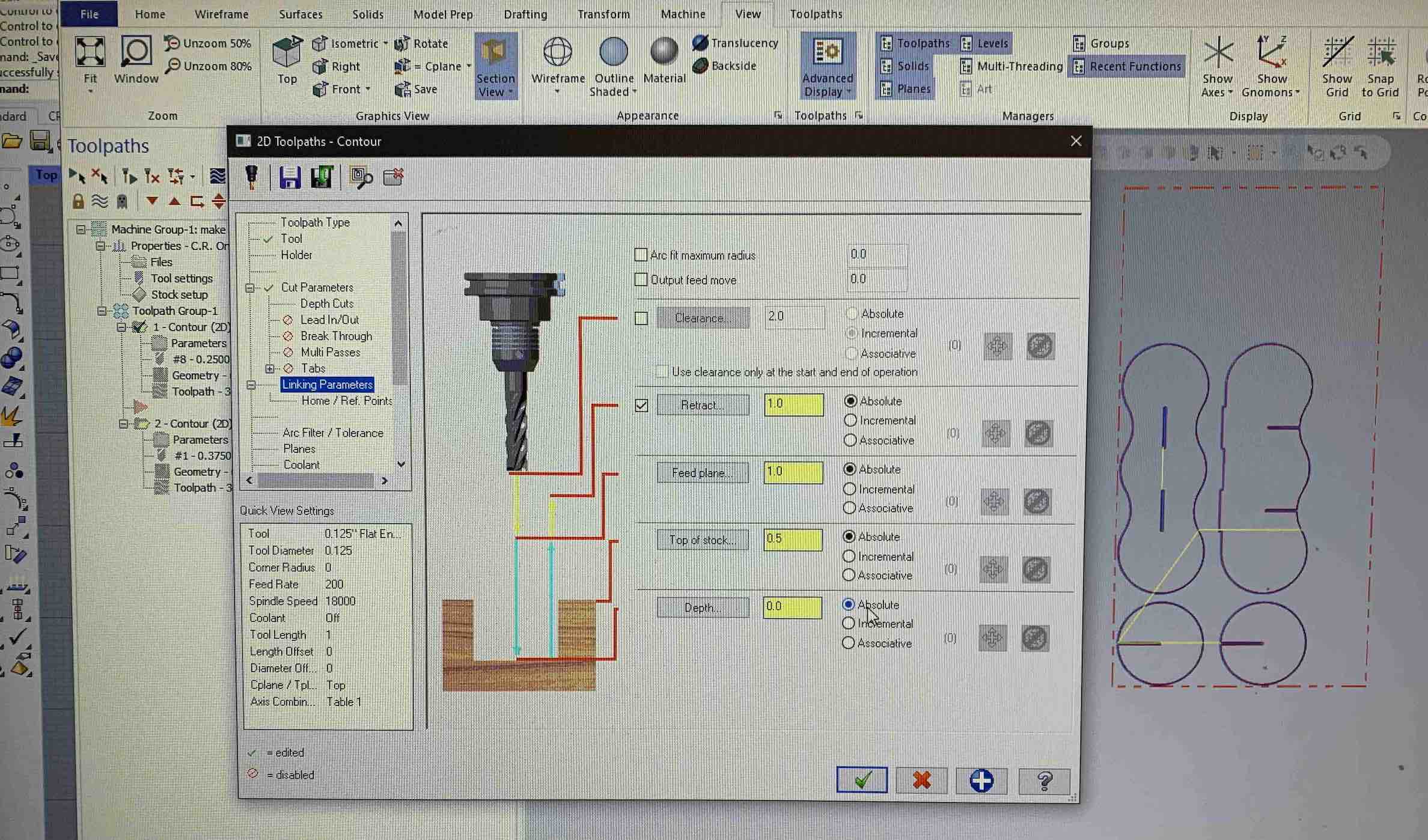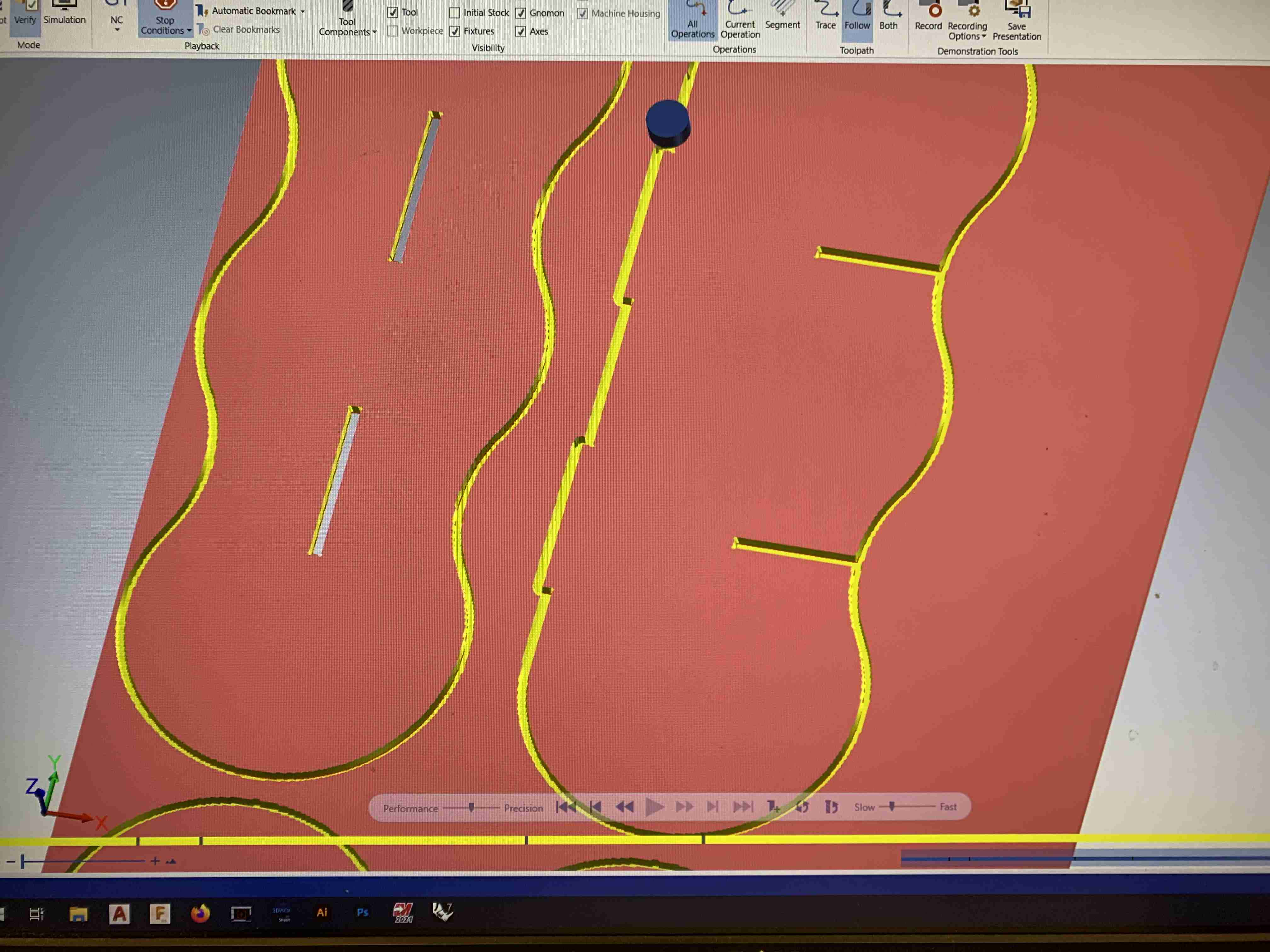Week 5: computer-controlled machining
Skills used: Rhino, Mastercam, and CNC milling.
Part 1, Design:
When Chris explained the process of using the CNC at N51, he first introduced the material and used the term "oatmeal cookie" to describe OSB, for its crumb texture which easly breaks at narrow points. That said, I used this weeks assignment to make an Oatmeal Cookie Rocking Bench to be used as seating for my friends birthday party... we are short a few chairs. (Happy Birthday, Ganit!)

The design is a series or interconnected circles which are linked through intersections, midpoints, and tangents.


The OSB sheets used to construct this weeks assigment are 48in x 96in x 0.50in. Then, based on our groups work to characterize the CNC, we discovered that the tollerence for two peices to slot together has a range between 0.48-0.50 in. I found that 0.49in is a tight but workable fit.

After the pieces were layed out on a 4x8 sheet in Rhino, I met again with Chris at N51, were he walked me through Mastercam. Before exporting it and setting up the tool paths, however; it is important that you have the outline strokes on one layer and second layer with points placed at all inside corners. These points located at the inside corners are used to drill small holes, called "dogbones" fillets, which clean out the rounded corners from the larger bit that mills out the objects profile. Pictured below are the standard bit sizes, the tool paths used for this job and a sketch on the dogbone fillets.



Below you can see the preview of the job before we send it to be milled. You'll notice that the tool path cutting the outline stroke is not going all the way through the 0.50in thick OSB. This is because the tool is only cutting 0.49in through the material to leave a thin "onion skin" of material left to maintain bed suction prevent pieces from comming loose without adding tabs.

Part 2, Fabrication:
After reviewing the preview for any errors, Chris and I loaded the file onto the mill. We first vacuumed the table for any debris, placed the OSB on the table, turned on the suction and the vent, and lubricated the mill. This job with its simple profile cuts only took a 5-10 mins to complete.
